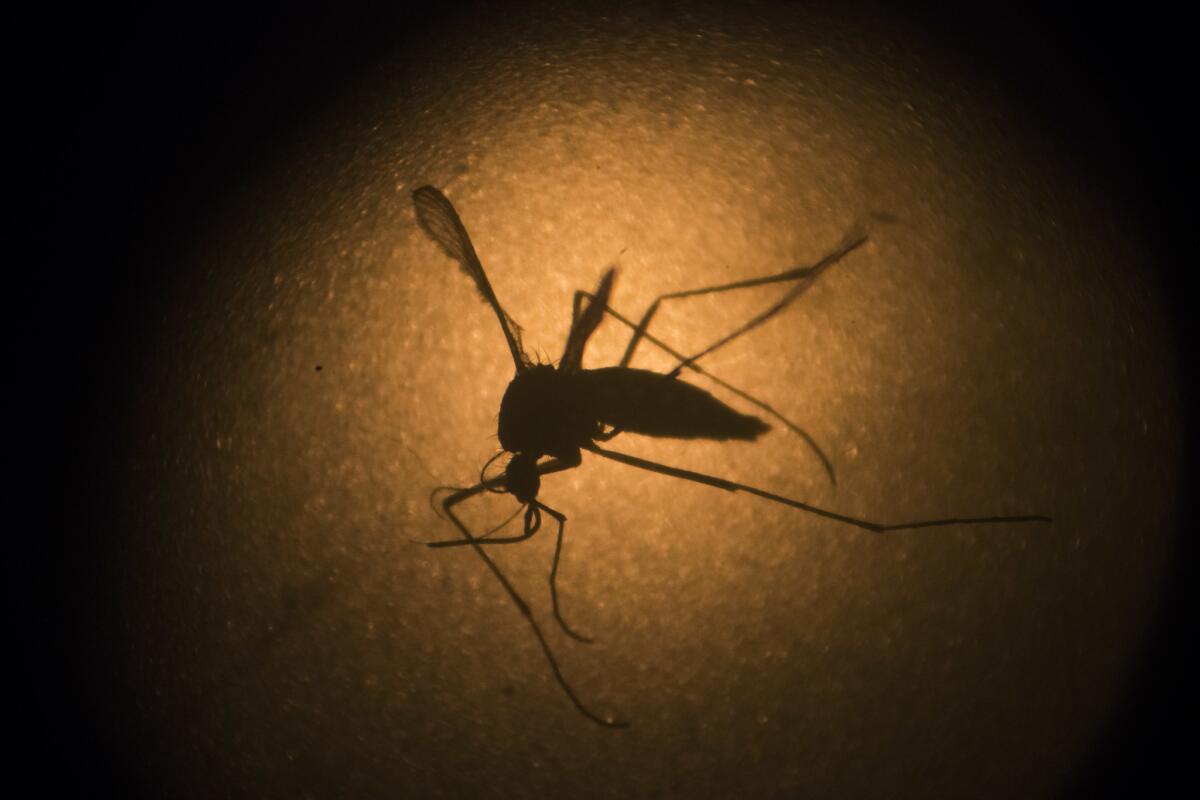Number of pregnant women with Zika in U.S. spikes with new counting method

The Centers for Disease Control and Prevention is changing the way it counts Zika cases — a move that triples the reported number of pregnant women with possible infections from the virus.
The change is not a sign that the actual number of cases has spiked; in fact, the number of new diagnosed cases appears to be on the wane of late. But the new counting method does indicate a shift toward what officials called a more comprehensive picture of Zika’s potential impact on those it infects.
“Understanding the range of health effects linked with Zika infection during pregnancy, as well as how many and which pregnancies may be at risk of poor outcomes, is essential for guiding our public health response to Zika,” Dr. Margaret Honein, chief of the CDC’s birth defects branch, said in a briefing Friday.
Until now, authorities had been reporting the number of Zika cases in pregnant women based on two requirements: whether their blood had tested positive for signs of the virus or an immune response to it, and whether they showed symptoms of the disease. Now, a positive blood test alone will be enough to add a case to the roster.
“While it’s an increase in the number of confirmed cases, it’s really more a change in the way the CDC has decided to report their data,” said Dr. Neil Silverman, a high-risk obstetrician at UCLA.
Under the new rubric, which is applied to data from the U.S. Zika Pregnancy Registry and the Puerto Rico Active surveillance system, there are 157 pregnant woman infected with Zika in the 50 states and the District of Columbia. Last week, under the old method of counting, there were 48.
In the U.S. territories of Puerto Rico, American Samoa and the U.S. Virgin Islands, the new method pushed the number of cases to 122, up from 65 last week.
“I think that the change is an entirely appropriate one,” Silverman said. “We need to know the absolute number of all women with confirmed infection — especially because the ongoing preponderance of data tell us that asymptomatic women can still have affected pregnancies, if the women are confirmed to have an infection.”
The virus, which is spread by tropical mosquitoes such as Aedes aegypti, is typically thought to run its course in a week or so and generally causes fairly mild symptoms, experts said. But a spate of birth defects has been linked to the rash of cases in Brazil and other parts of the Americas — particularly microcephaly, a condition in which a baby is born with an abnormally small head and underdeveloped brain.
All the 544 total cases in the 50 states have been people who had traveled to outbreak areas or who had had sex with someone who did. Only an estimated 1 in 5 people infected with Zika develop symptoms — fever, rash, joint pain and red eyes — which usually last no more than a week.
Doctors use two kinds of blood tests to make a Zika diagnosis. One tests for the presence of the virus itself, while the other detects the presence of antibodies produced by the body’s immune system after a recent infection. The antibody test does bear a small risk of false positives if a woman was infected with a similar virus, but experts said the new method on the whole provides a far more complete picture of Zika cases in the U.S.
International health agencies already have been reporting Zika infections in women based solely on lab tests. Some experts have found it surprising that the CDC has been basing its official number on a more conservative case definition.
The mere fact that a pregnant woman is infected with Zika does not mean that her child will end up with microcephaly or any other abnormality, said Dr. Richard Beigi, an obstetrics expert at the University of Pittsburgh Medical Center. In fact, the rate at which an infection in a mother translates to major abnormalities in a child isn’t currently known.
But the new counting methodology should help scientists determine that rate with greater accuracy, he said.
“Eventually, when we have more data and we have the pregnancy outcomes from these pregnancies they’re following, it’ll give us a better idea on the attack rate and thus, it’ll give us a better idea on how to counsel patients going forward,” Beigi said. “But we’re not there yet.”
He and others stressed that there’s no extra risk implied by the CDC’s new, higher numbers.
“Nothing’s changed in terms of whether people should worry or not,” Beigi said. “People should still follow the recommendations from the CDC related to travel and mosquito bite prevention.
“This is a good thing that they’re doing,” he added. “This is going to give us more information and more data in order to counsel and understand this problem better.”
The Associated Press contributed to this report.
MORE ON ZIKA
California’s fight against the Zika-carrying ‘cockroach of mosquitoes’
Congress moves to fund Zika response, but experts say it’s not enough
Scientists offer first direct proof that Zika virus in Brazil causes birth defects
UPDATES:
10:36 p.m.: This article has been updated with staff reports.
9:44 a.m.: This article has been updated throughout with more details on the change in how government is reporting Zika cases.
This article was originally published at 9:10 a.m.




